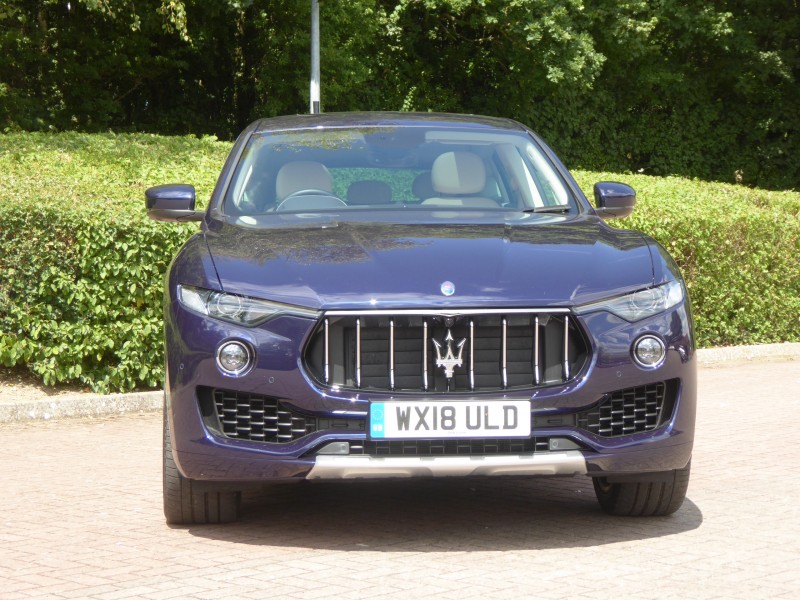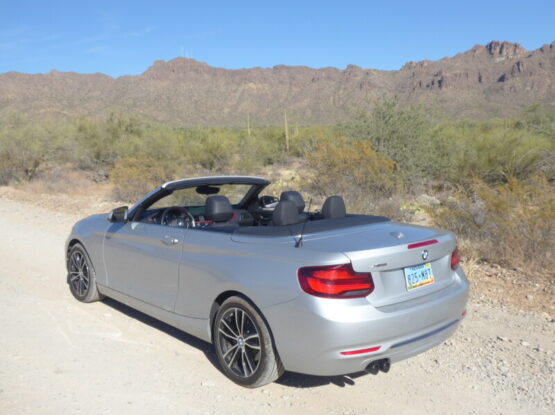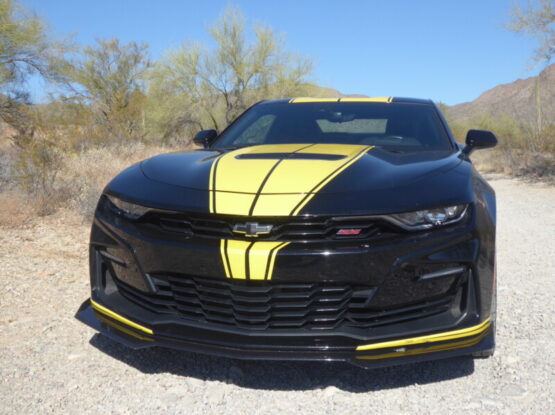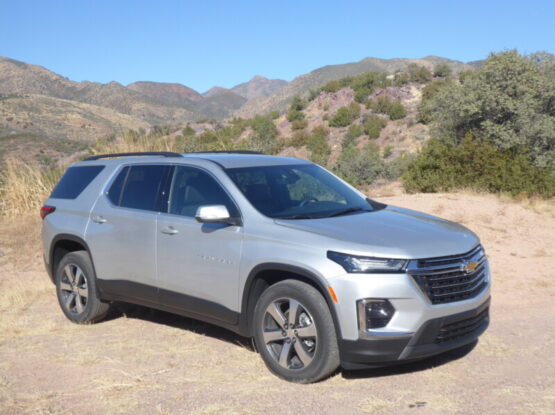The rise of the SUV and Crossover has been inexorable in recent years, with sales volumes increasing at a pace and manufacturers rushing to add vehicles of this genre, of every size, to their ranges. The market for such machines with a premium badge was proved by BMW and Mercedes in the late 90s, and has grown to such an extent that these cars are at least as important as those with more traditional bodystyles. At the very top of the market, though, there has been a little more hesitancy. Indeed when the first manufacturer to offer a vehicle of this type, Porsche, introduced the Cayenne, there was something of an outcry, with many bemoaning the fact that this was a real dilution of brand values and the car would not be a “real” Porsche. The market soon thought otherwise, though, and sales took off with the model becoming the brand’s best seller and saving the company. Surprisingly, other brands known for their high end sports and supercars did not rush to follow, but as all the signs suggested that this format was what an increasing number of customers did indeed want, then in recent years we have seen signs that almost everyone will follow suit. Maserati were among the first to reveal their hand, with a concept vehicle, called the Kubang first shown at the 2011 Frankfurt Show. It took another five years before a production vehicle arrived, though. Called the Levante, it was based on the Ghibli, which had endowed the car with its platform and most of the required engineering, it was launched at the 2016 Geneva Show and on sale in Europe a few weeks later. Maserati said at the time they expected it to become their best-selling vehicle. In some markets that has indeed proved to be the case, but in most of Europe, sales have been broadly equivalent to those of the Ghibli and indeed some buyers may well have agonised between the two for some time before deciding whether to go for the traditional saloon or the more versatile SUV. When I selected my Ghibli, the Levante was about to be launched, but as I had no need for the extra space, it was an easy decision not to wait for the Levante to reach the UK. As I started to see more of them around, I did wonder if I had made the right decision. The chance to try one, and find out, came when I booked the Ghibli in for a service and was offered a Levante as a loan car for the day. It was in GranLusso trim, and its Blu Passione pearlescent paint sparkled in the early morning sun, though as the clouds quickly arrived, I soon found that getting good pictures of a car in this colour is as hard as it is with my Ghibli in its Rosso Folgore paintwork. Couple that with quite a busy diary for the day and there are fewer photos than usual in this report. I was able to spend enough time the wheel, though, to see what the Levante was like.
At launch, all European market Levante models came with a diesel engine. A petrol-powered model was offered to US customers and this arrived in the UK in mid-2017, offering considerably more power (and cost) as the Levante S. This 424 bhp twin turbo 3.0 V6 model was later joined by a less powerful Levante with the 345 bhp version of the V6 petrol engine. The model I received had the diesel unit, and it is the same as that in my Ghibli. Developed in conjunction with VM Motori, it is a 3.0 litre V6 diesel unit, coupled to an 8 speed ZF automatic gearbox, putting out 271 bhp. I expected it to sound and feel very similar to the one I have become used over the past couple of years. So I was a little surprised when I fired the car up for the first time to find that it seemed noticeably quieter. With my car, the noise on start-up leaves you in little doubt that this is a diesel-powered car, with that characteristic slightly rattly sound, and although once warmed up this largely disappears, there are still times when it is still very obvious that this is not petrol-powered. In this installation there was far less evidence of this, with simply less sound on start-up and the occasions when you most often notice the diesel-ness underway, a trailing throttle, also proving to be more noise-suppressed. I did ask the dealer if they were aware of any changes to the engine since my car was built, and there have been none, so this must simply come down to better noise suppression and more sound deadening. As to how it propels the car, then things were more familiar. 271bhp is sufficient for a car of this size and weight for it to feel brisk rather than truly rapid. The 443 lb/ft of torque does mean that once underway, there is ample acceleration, though, and the shifts between the gears are exceedingly smooth. Overall noise levels are low, with little interference from road or wind, so at a steady speed on the motorway this is a refined cruiser which you could well imagine driving over a long instance with no hardship. Petrol engines in cars of this size never score well on fuel economy, which is one reason why diesel power has until recently been the sine qua non of large SUVs, even with badges such as Maserati. The Levante weighs over two tonnes, so even with a diesel engine, every trick that you can think of is needed to improve the economy and lessen the CO2 emissions. A front grille shutter system which opens for engine cooling purposes and closes to reduce drag, features, with the result that, overall, the Maserati’s shape is slippery enough to garner a best-in-class drag coefficient of only Cd 0.31. As well as lowering noise levels, this will definitely help with fuel consumption. Indeed, the Levante averaged 38 mpg in my short tenure, which comprised little more than a trip back from the dealers to home and back with only a short trip out in quest of more photos. That figure is broadly comparable to what I achieve with the Ghibli, with urban motoring increasing the consumption a bit and longer journeys eking the fuel out a bit more. There is a Stop/Start system which cuts in and out rapidly enough. As with the Ghibli, there are a choice of driving modes, with Sport and ICE offered as well as Normal, and there is are buttons to select the one you want in the centre console. Opting for Sport will change the engine note, encourage the transmission to hang onto the gears for longer and sharpen up throttle response and steering. It does mean that you cruise on the motorway at higher revs, so the Levante is best left in Normal model when at a steady speed, but you may want it when on A and B roads. Certainly the extra weighting to the steering was welcome, as the normal mode gave the sensation of being a little over-assisted and lighter than I would want. It does make the Levante easy to drive, though. There is standard all-wheel drive on all versions of the Levante, so there is plenty of grip. Underway it did feel a bit like a taller-riding version of the Ghibli with a higher centre of gravity, which of course is what it is, even though it is a lower point than in rival cars and the Levante does have perfect 50/50 weight distribution. The Levante handles corners tidily, with body roll kept in check, and a feeling of security as you tackle the twisties, though if you are looking for a truly sporting experience on bendy roads, this is probably not the car for you. More importantly, perhaps, it rides well, even though the test car had large 265/45 R20 wheels, in no small part thanks to the air springs and Maserati Skyhook adaptive dampers which are standard on all models. That self-levelling air suspension features continuous damper control allied to a choice of five ride heights which hoist the bodyshell a maximum of 40mm above the normal 210mm ride height, or lower it by as much as 45mm for easier access and egress when parked. At speeds above 106mph, the car automatically lowers by 35mm The brakes were powerful and effective. The raised driving position will give you that commanding view of the road that is often talked about when describing cars like these. It has relatively thick pillars all round, but there are some technology aids to help you manoeuvering, with a rear-view parking camera and the door mirrors tilt downwards towards the kerb when reverse gear is selected. Be in no doubt, though, that this is a big car, in every dimension. It is wide and like most of its rivals, you may need to watch the height in some car parking structures.
The interior of the Levante is very similar to that of the Ghibli with only a few detailed differences, largely arising from the extra size and space. The dash and door casings are covered in quality materials, with leather featuring extensively in the GranLusso trim of the test car. The steering wheel is leather wrapped and is particularly nice to hold. The same instrument pack features as in the Ghibli, with two large dials for speedometer and rev counter each in individual cowls and smaller ones for fuel level and water temperature in the central area which use a graduated shading as opposed to a pointer. A digital display area sits in the middle of the cluster and you can cycle through the menus and sub-menus using buttons on the right hand steering wheel spoke. As well as a digital speed repeater, there are such things as the level of AdBlue, distance to next service and tyre pressure monitoring system presented here. The steering wheel also has the buttons for cruise control and there are buttons on the rear of the wheel to change the audio selection. There is a single column stalk, which you twist for the wipers. I still do not find this as easy as a separate stalk. Lights, with an Auto function, are operate by a rotary dial on the dash to the right of the wheel. The centre of the dash contains the 8.4″ display screen for the Maserati Touch Control infotainment system which sits between the central air vents. It has a touch screen interface and is easy to use, and responsive to your selections. Integrated navigation is included, as well as DAB radio and an on-line owner’s handbook and various settings for convenience features. Below this are the switches and buttons for the dual zone automated climate control system. The centre console contains the Driving Mode buttons, some of the selectors for the Infotainment as well as the electronic handbrake. The whole ensemble is easy to use with no significant familiarisation required even for those who have not been driving a Maserati before.
Opening the door and preparing to get in the Levante, you do realise that this is a rather taller car than a Ghibli. With greater ground clearance, you do have to climb up as opposed to settle down into the car, but it is not as pronounced as with some large SUV-type vehicles. GranLusso trim means full electric operation of the seats, with the buttons to do so on the side of the seats and there is a two position memory to store your preferred position once you have found it. There is a fully adjustable steering column, which telescopes in/out as well as up/down. There is a definite feeling of space in the cabin, with particularly plentiful headroom and the wide centre console means that even the passenger seat seems quite a way distant. Those in the back will probably experience the same sensation. The Levante is wide enough to be able to accommodate three adults quite easily and with only a relatively low central tunnel, there should be ample space for a middle seat occupant’s legs. Headroom is particularly plentiful and even with the front seats set well back, there is enough room for legs. Certainly there is more space here than in a Ghibli. Comfort features include a drop down central armrest, air vents on the rear face of the centre console and there are stowage nets in the back of the front seats as well as bins on the doors for odds and ends. The tailgate is electrically assisted, which is no bad thing as it is large and heavy. The boot is long, but not perhaps as deep from top of the load cover to the floor as you might expect. There is a noticeable slope to the rear tailgate, too, so you will not get tall items in unless you fold the seats down. They are asymmetrically split and the backrests simply drop down to create a long and flat load bay. There are shallow trays under the boot floor, and plenty of retaining straps and hooks on the sides to secure luggage, and there is a ski flap through the central armrest. Inside the cabin there is a good-sized glovebox, pockets on the doors, a deep cubby under the central armrest, a small lidded cubby over the driver’s knee and a pair of cupholders under a lid in the central console.
As you might expect, configuring a Levante will give you lots of choice, even before you get to the extensive options list. As well choosing from a palette of around a dozen colours, you need to choose the wheel trim style, the colour of the leather upholstery and there are a range of trim inlays which include carbon fibre, piano black and my favourite, known as Radica, which is a sort of matt wood effect. You get the choice of colour for the steering wheel, lower dash and headlining, the latter including an alcantara finish if you want. The entry level car is well equipped with bi-xenon auto-operating headlights. front fog lights, LED rear lights, a twin pipe exhaust, full leather upholstery, the Maserati Touch Control infotainment system with bluetooth, navigation and a DAB radio with 8 speakers, cruise control, auto headlights and wipers and keyless starting. As well as the standard edition car, Maserati now offer the GranLusso and GranSport version, just as they do with the Ghibli. Both cost the same, and at first glance seem considerably more costly than the entry level car, but look at the extra features and what they would cost if added individually, and you may well conclude that these versions are actually not bad value. The GranSport, as the name suggests, is intended to convey more of a sporting impression, with standard 20″ alloys, reprofiled bumpers, sports seats and piano black external detailing. The GranLusso has chrome grille bars and chrome insert detailing, metallic scuff plates and roof rails, black painted brakes and body-colour side sills, which I think makes it look quite smart, and you also get full electric adjustment of the seats with a 2 position memory, more use of leather inside, standard metallic paint, as well as a rear-view parking camera and an electrically assisted tailgate. It comes on 19″ wheels, though many will opt for the larger 20″ ones as was the case with the test car. If you want paddles, they will cost £270 extra, and the massive sunroof that was on the car is also a cost option. There are various option packs which allow you to add further comfort, convenience and appearance features.
I’m not really a fan of SUVs, of any size, as I have no personal need of the extra space they offer and see more of the disadvantages of extra bulk, weight and somewhat compromised driving dynamics. So on that basis, I should really conclude that I did not like the Levante. But that was not the case. Indeed when I handed it back to the dealer, I commented that I liked it rather more than perhaps I should. I guess it is because so much of what I experienced just felt like a slightly taller Ghibli, and of course I do love my Ghibli. The extra refinement of the engine was welcome and slightly unexpected and no doubt contributed to my positive impressions, and I could easily see that if you wanted a bit more space than you get in a regular 4-door saloon then this is the way to deliver it. This would certainly be a very agreeable car in which to pack 4 or maybe 5 people and plenty of luggage and go on a long journey. A proper Grand Tourer in fact. Once upon a time, that would have been something you did in a two seater sports car, and would give you a stylish machine to show off en route and at your destination. Maserati will still sell you one of those, and rather fabulous their GranTurismo offering is, too, but for most people, this interpretation of Grand Touring is more practical and in the modern way, still very stylish, with all those styling cues to remind everyone that this is indeed a Maserati. Combine that with an entry level price which is nothing like as steep as you might imagine – though this will change if you go for a GranLusso or GranSport especially with the more powerful S model petrol engine – and you can see why the introduction of the Levante double the company’s total sales within months. It faces plenty of rivals, of course, and objectively every single one of them – the likes of the Porsche Cayenne, Range Rover Sport being the most obvious ones – is excellent. The Levante won’t be for everyone, but a part of me is tempted to add “thank goodness”. By selling only a relatively small number of cars per year, the cachet of the Maserati name remains, even though my own experience after a couple of years owning one of their cars suggests that the firm no produces cars which you can use every day and in which you can cover large miles.


.jpg?width=180&height=160&fit=bounds)
.jpg?width=180&height=160&fit=bounds)
.jpg?width=180&height=160&fit=bounds)
.jpg?width=180&height=160&fit=bounds)
.jpg?width=180&height=160&fit=bounds)
.jpg?width=180&height=160&fit=bounds)
.jpg?width=180&height=160&fit=bounds)
.jpg?width=180&height=160&fit=bounds)
.jpg?width=180&height=160&fit=bounds)
.jpg?width=180&height=160&fit=bounds)
.jpg?width=180&height=160&fit=bounds)
.jpg?width=180&height=160&fit=bounds)
.jpg?width=180&height=120&fit=bounds)
.jpg?width=180&height=120&fit=bounds)
.jpg?width=180&height=120&fit=bounds)
.jpg?width=180&height=120&fit=bounds)
.jpg?width=180&height=120&fit=bounds)
.jpg?width=180&height=120&fit=bounds)
.jpg?width=180&height=120&fit=bounds)
.jpg?width=180&height=120&fit=bounds)
.jpg?width=180&height=120&fit=bounds)
.jpg?width=180&height=120&fit=bounds)
.jpg?width=180&height=120&fit=bounds)
.jpg?width=180&height=120&fit=bounds)
.jpg?width=180&height=120&fit=bounds)
.jpg?width=180&height=160&fit=bounds)
.jpg?width=180&height=160&fit=bounds)


